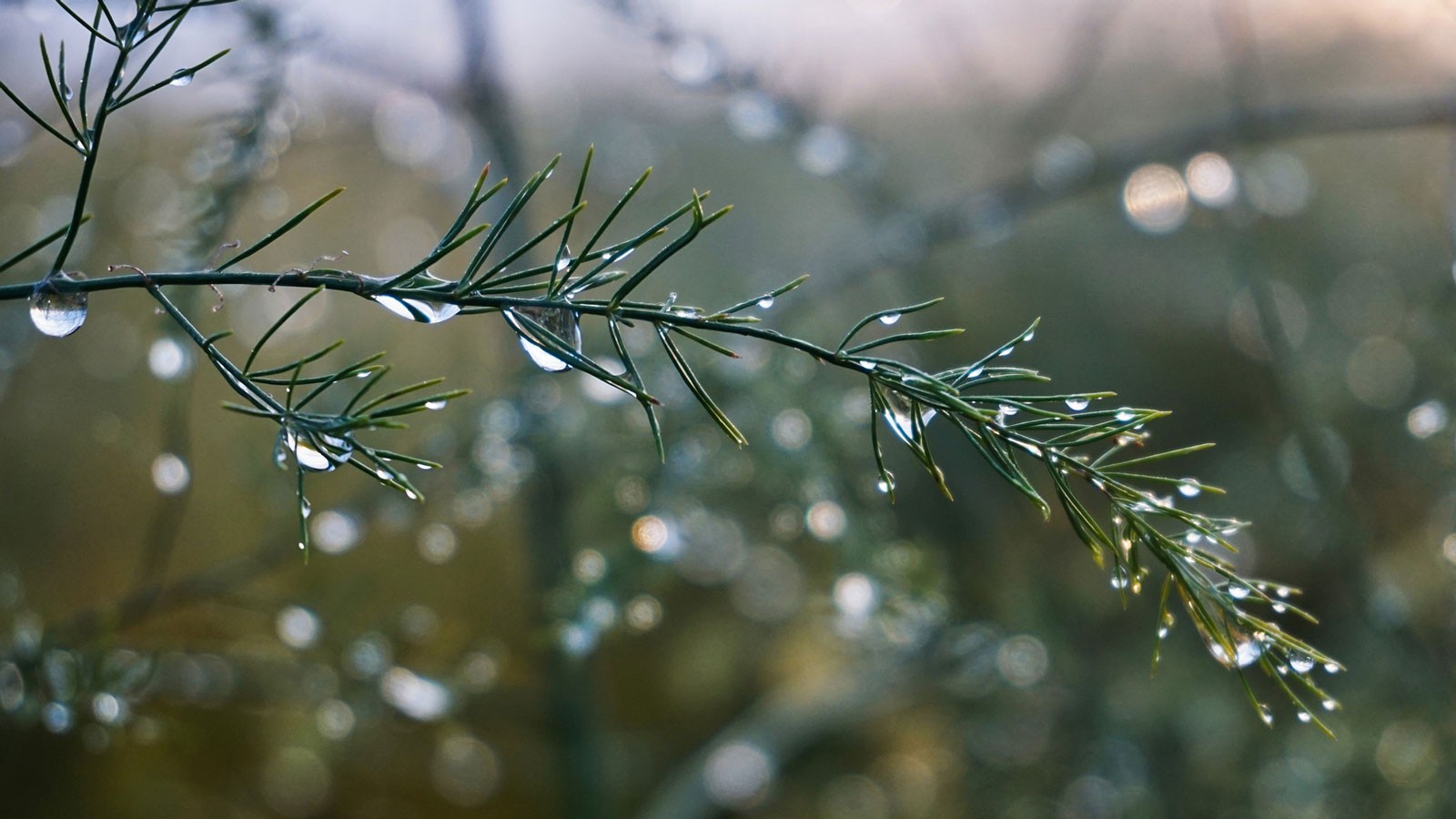Thirsty Roots: Identifying Plant Winners, Losers Under Changing Climate
By Lael Gilbert |
In some places rain is changing — it is falling less often, but with more intensity. New research is deciphering which plants will might thrive and survive under these new conditions, and it often depends on their roots.
Climate change means more than just hotter summers — shifting patterns in the global system are changing how rain is delivered to plants. Since warm air holds more water than cool air, in some places it now rains less often, but each storm carries more water. This significant shift has had real-time repercussions — intense typhoons or disastrous flooding — but it also creates long-term changes in the makeup of plant communities, changing the way water moves through soils and root systems.
New research from a team from the Quinney College of Natural Resources is deciphering what these intense rain events could mean for landscape-level plant populations. Andrew Kulmatiski, Martin Holdrege, Cristina Chirvasa and Karen Beard are working to define which kinds of plants will make the cut.
“Plants are incredibly sensitive to the moisture available to them, especially in arid places like the Western U.S.,” Kulmatiski said. “When rain comes hard and fast, the species that have the kind of roots that can absorb water quickly will most likely grab an adaptive edge and become more abundant.”
This means that shrubs like sagebrush could expand their territory and edge out less-adaptable species like grasses. This will have major repercussions for the ecological systems across the region. But understanding specifics about what particular plants will gain an edge is trickier than you’d think.
The root of the problem is measuring the water uptake in a plant’s underground system. As a blunt measure, scientists have been using the mass of a root system to determine how much water any individual plant species might be able to absorb. The bigger the root system, they figured, the more water it could slurp up. It also made sense to assume that roots closer to the surface could grab more water than deeper roots, and that bigger roots had more drinking capacity. But it’s becoming apparent that these assumptions have flaws.
Some plants have structural differences that influence how much water can be pulled in, and how quickly the plant can take it up, Kulmatiski said. Some roots grow to serve other functions entirely, such as to anchor a plant and don’t have much capacity to absorb water at all.
To tease out this nuance, Kulmatiski and the research team used simulated precipitation treatments (sprinklers and buckets) on different types of plants. They dispensed tracer isotopes at different depths of the root system to measure how water moved through the plant system and to determine how different parts of the root would respond to a deluge of available water. They found that, contrary to long held assumptions, deep roots typically absorb more water than shallow roots.
They also found that in intense precipitation circumstances, the root systems of shrubs and forbs moved in ways to increase their water uptake when there was a lot of water available at one time, compared to grasses, which couldn’t adapt as quickly. For the shrubs and forbs, this translated into better above-ground growth.
“It shouldn't be surprising that their ability to absorb water can predict plant growth in arid areas, but until now, it has been difficult to measure water uptake by different plants,” Kulmatiski said. “This new research demonstrates an approach that can be used to measure water uptake, and has shown the ability to predict plant growth where other measurements have failed.”
Shrubs were able to absorb more water because their deeper roots had a competitive advantage across a larger area, Kulmatiski said. This suggests that a blueprint of active root distributions for a plant, rather than just the mass of the root system, could help to better predict a plant’s response to climate change.
If the West is likely to experience increased shrub growth and decreased grass growth on a landscape scale, this will have major implications for things like grazing, he said, and will have a big effect on how much carbon that soils hold, on wildfire regimes, and on water cycling.
“Small differences in root structure can have big effects on water uptake,” Kulmatiski said.
Understanding what that means for low-water environments like Utah is becoming increasingly important, as taking advantage of water available during more infrequent rainstorms could spell the difference between survival or failure across thousands of square miles of landscape in the Intermountain West.
WRITER
Lael Gilbert
Public Relations Specialist
Quinney College of Natural Resources
435-797-8455
lael.gilbert@usu.edu
CONTACT
Andrew Kulmatiski
Associate Professor
Department of Wildland Resources/Ecology Center
435-881-5496
Andrew.kulmatiski@usu.edu
TOPICS
Research 878stories Environment 263stories Water 259stories Plants 187stories Climate 151storiesComments and questions regarding this article may be directed to the contact person listed on this page.







